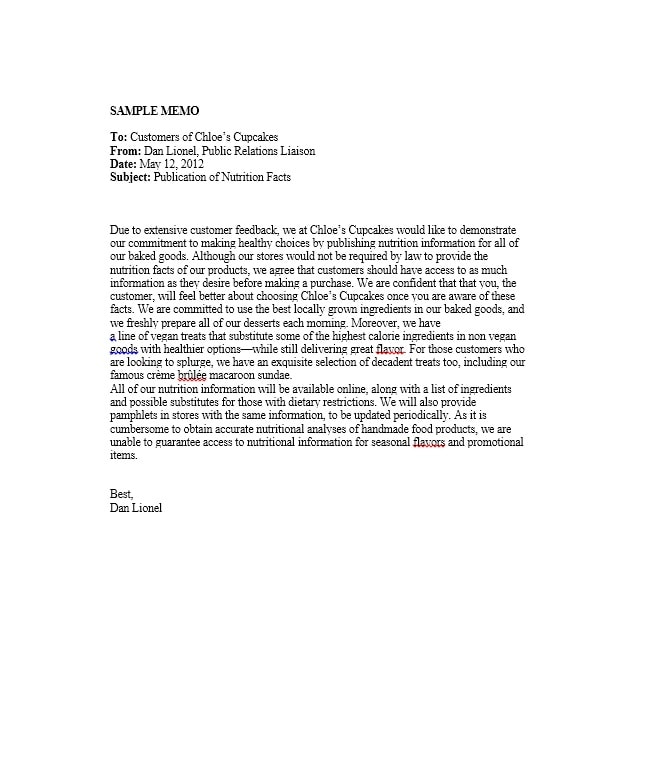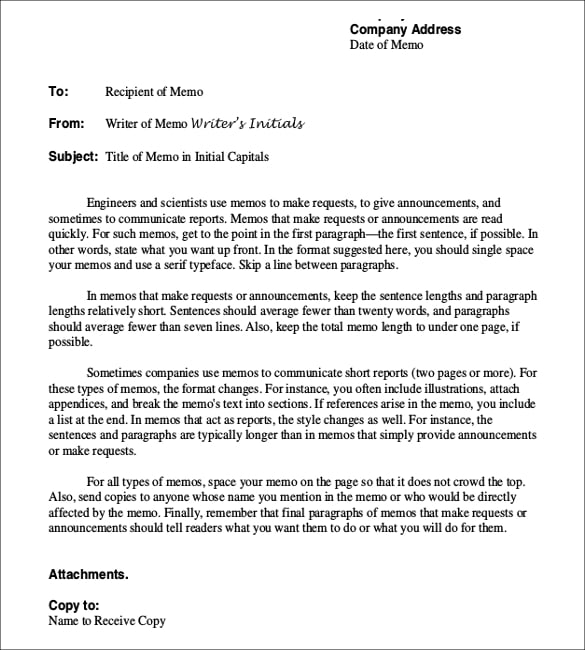

Suppose, for instance, that you were writing to request authorization and funding for a business trip. The subject line should orient the reader to the subject and purpose of the memo and provide a handy reference for filing and quick review. Create a very specific subject line to give the reader an immediate idea of the memo's (or message's) subject and purpose.
In addition to making memos easier to read, a professional writing style also improves the writer’s credibility. Maintain a positive or neutral tone avoid negative language if possible.

To achieve such a style, use short, active sentences. So, your style should be professional, straightforward, cordial, and easy to read. The style of your writing should be appropriate to your audience: In this case, your audience is your boss, your coworkers, or both.
Maintain a professional, succinct style. In other words, supporting details should follow the main point or conclusion, not precede it. If readers have a question or problem, they want to know the answer or solution immediately-if readers want more information, they can continue reading. Readers should quickly grasp the content and significance of the memo. This may be the single most important guideline about the structure and content of memos. The following five writing strategies help readers to navigate business memos easily and quickly: HOW DO I WRITE AN EFFECTIVE BUSINESS MEMO?Īs stated above, an effective business memo is brief, direct, and easy to navigate. In determining the purpose and audience of your memo, ask yourself: Who is the intended recipient of this memo? What do I want the recipient to do after reading the memo? What information will the recipient be looking for in the memo? These kinds of questions will help guide your content, structure, and style choices. Readers may also want to get a sense of your professional ability and judgment. Others may want to obtain specific information (evidence) needed to understand and justify policy and action decisions. Often, readers need to make policy and action decisions based on the recommendations. Those who read the entire document for the details that support its major claims or recommendationsīear in mind that these readers may have different purposes in reading the memo.  Those who skim the entire memo for its key points and a few details they're interested in. Those who read only the executive summary. In writing a business memo, you should structure your memo to accommodate three kinds of readers: Other times, memos may provide or request factual information.īusiness memos are designed to accommodate busy readers who want to find the information they need from the memo quickly and easily. Often, the purpose of a business memo is twofold: to identify a problem and propose a solution. They are less formal than letters but should maintain a professional, succinct style. Memos are characterized by being brief, direct, and easy to navigate.
Those who skim the entire memo for its key points and a few details they're interested in. Those who read only the executive summary. In writing a business memo, you should structure your memo to accommodate three kinds of readers: Other times, memos may provide or request factual information.īusiness memos are designed to accommodate busy readers who want to find the information they need from the memo quickly and easily. Often, the purpose of a business memo is twofold: to identify a problem and propose a solution. They are less formal than letters but should maintain a professional, succinct style. Memos are characterized by being brief, direct, and easy to navigate. 
A business memo is a short document used to transmit information within an organization.








 0 kommentar(er)
0 kommentar(er)
